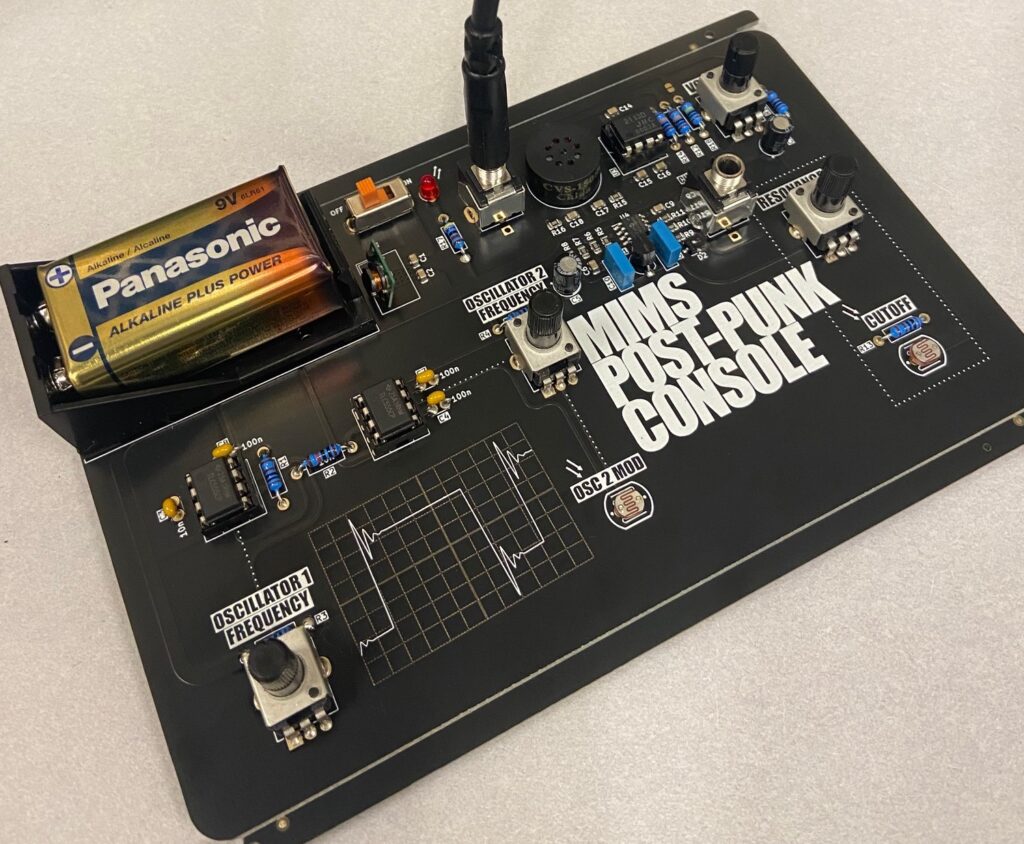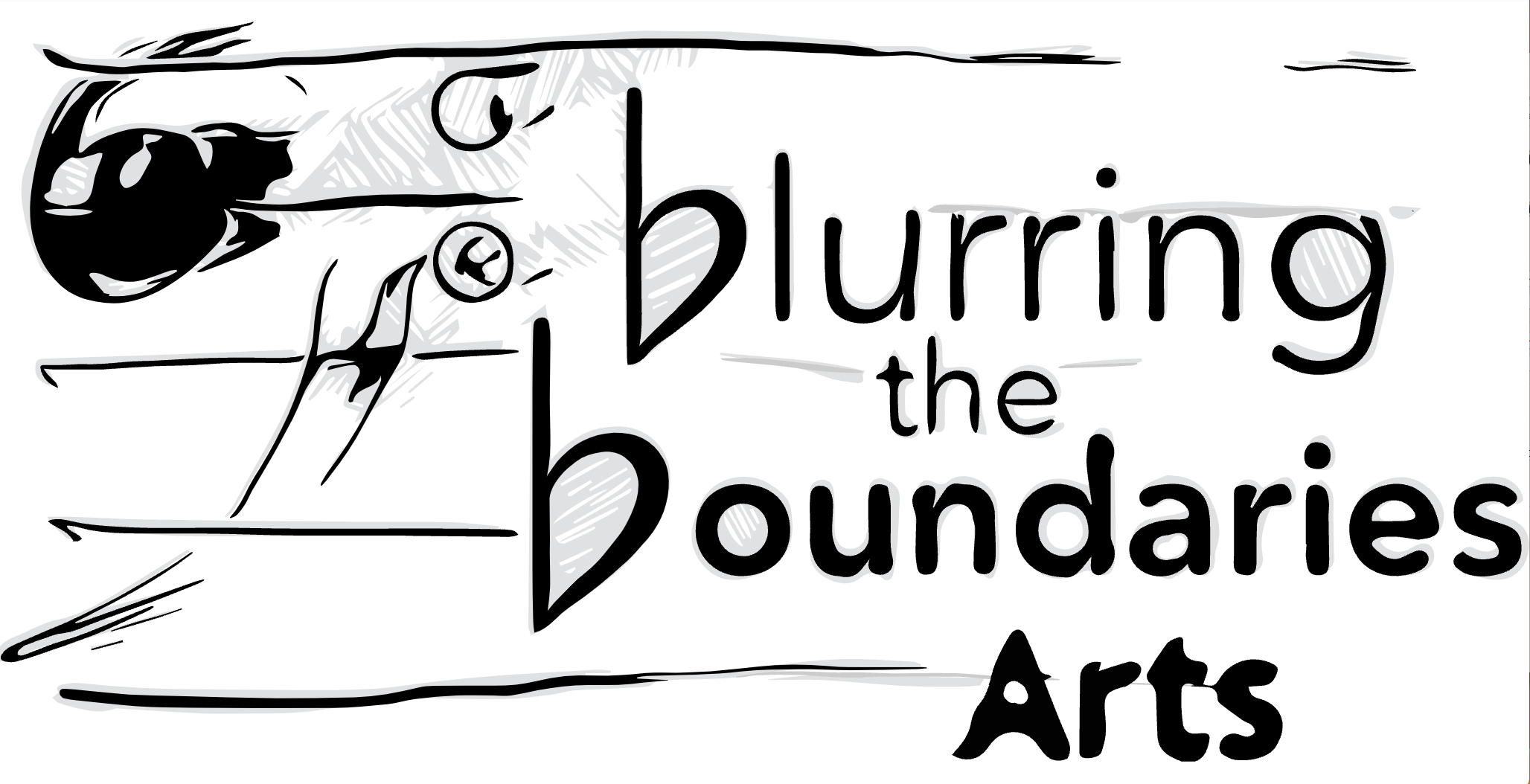The MIMS Post-Punk Console: Based on the circuit designs of Forest Mims, DSF has created a proof-of-concept DIY synth kit that will be used as a low-risk/low cost training environment for novice research participants and students (Kwartzlab; CMST Synth Club) to learn through-hole soldering while making and testing a simple, self-contained sound generating synth console. This synth takes two-to-three hours build time, and operates as a fully-functioning oscillator (2) with pitch and internal FM modulation controls, and a light-dependent resistor to control a low-pass filter.
Applications for this module connect to wider STEAM curriculum goals beyond the current MIMS prototype. The MIMS Postpunk is a proof-of-concept instrument that lays the foundation for more complex making and learning environments, including a semi-modular synth in the design phase now (w/ two Dave Rossum oscillator chips, generously provided by Dave at our Patch-Up Event at the Re/Lab in 2021).
From Prototype to Full-On Semi-Modular Synth Environment
Next Up: Sound synthesis using analog synthesizers is inherently transdisciplinary, connecting worlds of sound, music, and art with domains of inquiry associated with STE(A)M learning. Educational literature identifies the benefits of integrating sound synthesis into both science and music classrooms, yet rarely do worlds art, science and making converge in schools. Addressing these needs and gaps, our research will 1) provide the tools/materials and instruction for instructors/students to build their own semi-modular synthesizers; 2) integrate STE(A)M curriculum to understand basic electronics and sound physics as participants fabricate/test their instruments; and 3) enable participants to learn the practice of synthesis and make music using the instruments they fabricated.
Research questions:
- What and how do participants learn through engaging the practices of building their own synths and making music with their instruments?
- How might building one’s own instrument – and gaining a situated understanding of component functions and the physics of sound — impact the experience of making music, or deepen relationships with sound/music and community?
- What idiosyncratic inquiries, interwoven STEM/aesthetic interests, or experiences of autonomy might emerge through fabricating and playing community-made instruments?
Our research-workshops will provide a window into the STE(A)M principles at play in synthesis and audio engineering, where hands-on experiential learning, making, testing and trouble-shooting, multimodal data visualization (using oscilloscopes and data utilities), and creativity are integrated. Instrument making offers transdisciplinary orientations to learning with sound and supports new forms of musicianship, as well as provides opportunities to engage sound and music from multiple vantage points.
Designing Sound Futures working group includes Thumlert, Tzerpos, Nolan, Baljko, and Smth – with synth designer Eric Neil Johnson (DSF RA) from System80.




















